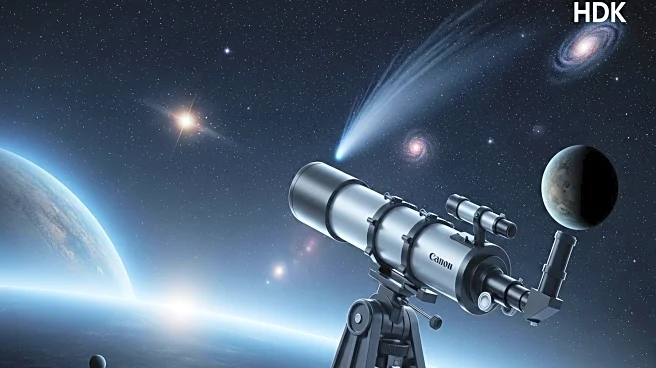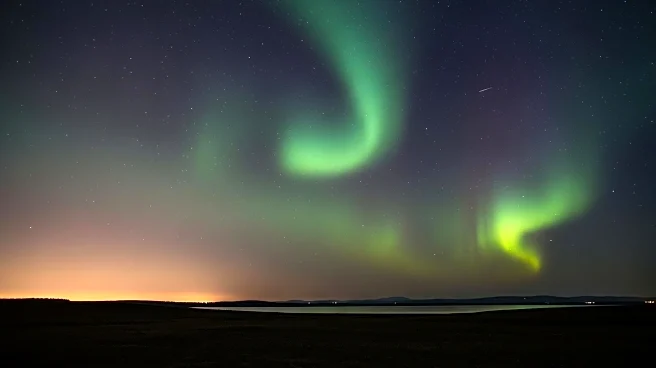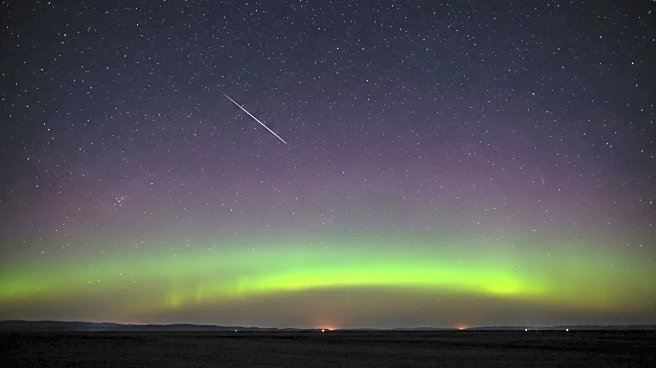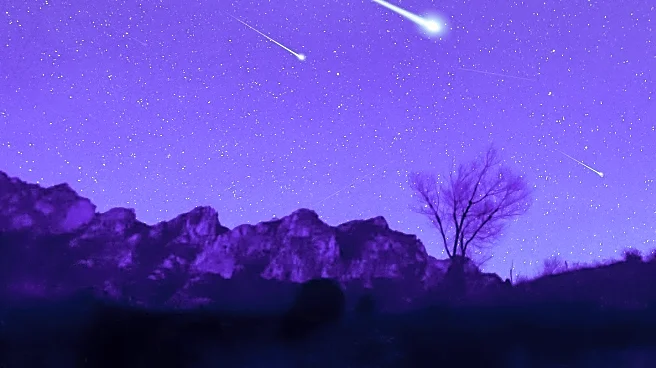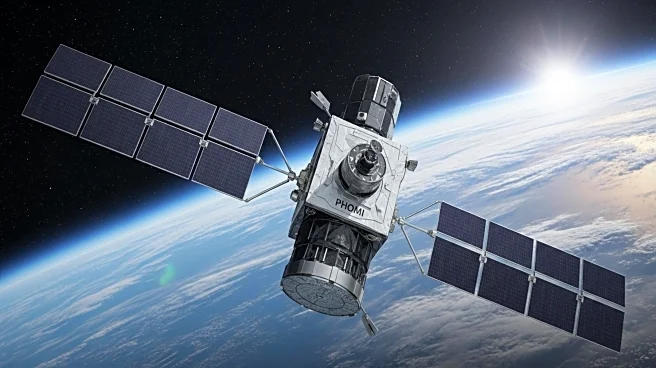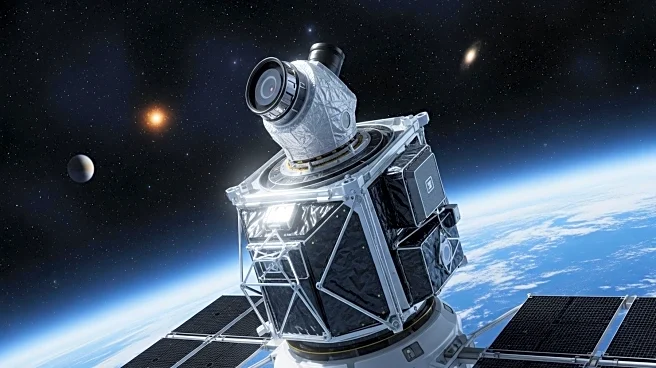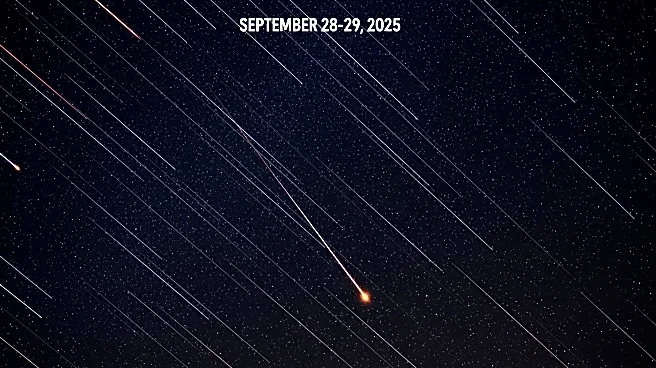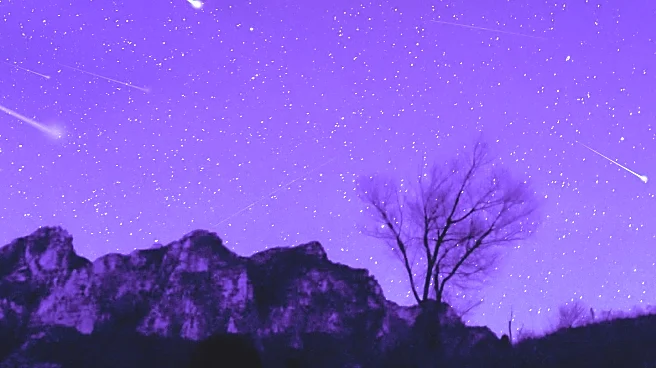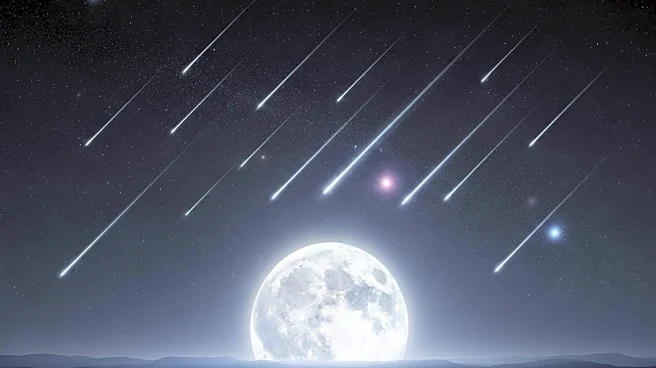What's Happening?
The NOAA Space Weather Prediction Center has issued a warning for a G3 (strong) geomagnetic storm expected on September 30, 2025, due to a coronal mass ejection (CME) from recent solar flares. This storm could result in spectacular aurora displays at high latitudes. Additionally, two comets, C/2025 R2 (SWAN) and C/2025 K1 (ATLAS), are becoming visible, with the potential to be seen with the naked eye or binoculars. The Orionid meteor shower, active from October 2 to November 7, is also expected to provide a celestial show, with peak activity around October 21-22.
Why It's Important?
Geomagnetic storms can have significant impacts on satellite operations, power grids, and communication systems. The potential for aurora displays offers a unique opportunity for skywatchers and photographers. The visibility of comets and meteor showers adds to the excitement for astronomy enthusiasts. These events highlight the dynamic nature of space weather and its potential effects on Earth, emphasizing the need for continued monitoring and preparedness.
What's Next?
Skywatchers are advised to monitor local weather conditions for optimal viewing opportunities. The NOAA and other space weather agencies will continue to provide updates on the geomagnetic storm and celestial events. Observers should prepare for potential disruptions in communication and navigation systems due to the geomagnetic activity. The upcoming peak of the Orionid meteor shower will be a key event for astronomers and enthusiasts.

